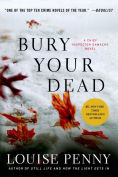Twenty-five-year-old Maeve Leahy, professor of languages at Betheny University in New York State, has set up a straight and narrow path for herself. She devotes herself to her job, has two good friends, and never goes home to Castile, Maine. Her roommate Kit is a first-year resident and her best friend since childhood. Her other friend, met in college, is Noel, a painter whose father owns an antique store in town.
The person who is missing is Moira, the identical twin sister Maeve lost nine years earlier.
The chapters in this intriguing story alternate between Maeve’s adventures in the present day and the twin sisters’ childhood, told from Moira’s point of view. The pattern of alternating chapters and the clear statement of year and place for Moira’s chapters ensure that there is no confusion.
Taking refuge from the November wind and the memories it carries, Maeve goes into an auction house where she falls in love with and buys a keris, a Javanese weapon said to have mysterious powers. It reminds her of the keris her grandfather once owned, the one Maeve lost in the bay as a child, pretending to be Alvida the Pirate Queen. Her new purchase brings on mysterious letters and a package, leading her eventually to Rome to unravel the secrets of the keris and the people connected to it.
I generally don’t like to read adult novels with elements of the supernatural. It’s odd because I like the supernatural in Young Adult novels, often rereading some of my favorites such as Susan Cooper’s The Dark Is Rising series and, one of my top five favorite books, Jane Langton’s A Diamond in the Window. I even read a good bit of fantasy in my twenties and early thirties, when I still sort of believed that I might be given a magic cloak or sword that would make everything right. Then, during a difficult time, I decided that the only way to move forward was to adopt poet Stevie Smith’s dictum to just “go on, without enchantment.”
My slight acquaintance with the author and the praise I’d heard for the novel led me to set my scruples aside. I’m glad I did. For one thing, the elements of the supernatural in this book can be explained rationally, so it becomes the reader’s choice what to believe, as in The Virgin of Small Plains. Curiously, I read that book with two book clubs, one of whom all accepted the supernatural causes and the other who all believed in only the rational explanations.
Secondly, Walsh’s story revolves around one of my continuing interests: the influence of the past on the present. And finally—making me laugh at myself—Maeve’s inner struggle is about breaking free of the restrictions she has placed on herself, even as she confronts the dangers that attend the keris.
I enjoyed the story, even though I sometimes felt like shaking Maeve and Moira for their missteps and bad decisions. These grow naturally out of the young women’s characters, though, so I forgave them. A few unexpected twists surprised and delighted me, and the ending satisfied me in a way that few novels do these days. I look forward to reading Walsh’s latest book, The Moon Sisters.
When you read an adult novel that contains some elements that might be supernatural, do you believe the rational explanation or the supernatural one?









